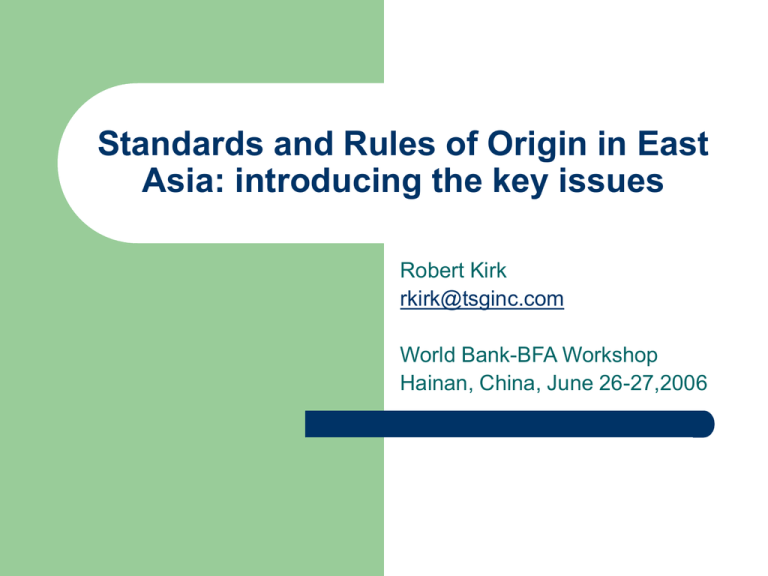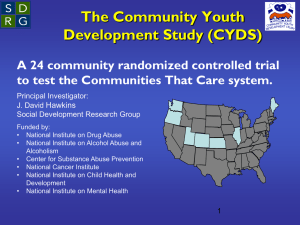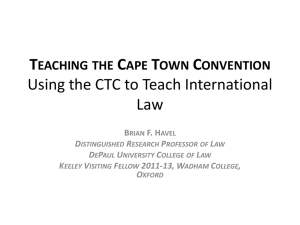Rules of Origin and Standards
advertisement

Standards and Rules of Origin in East Asia: introducing the key issues Robert Kirk rkirk@tsginc.com World Bank-BFA Workshop Hainan, China, June 26-27,2006 Overview Rules of Origin – Definition Approaches to ROO Impact on ASEAN of ROO Standards – Standards as a trade issue Multilateral and Regional Approaches Rules of Origin: Defining Origin Wholly Obtained Substantial Transformation – – – Change of Tariff Classification (CTC) Value Added Specific Manufacturing Processes Rules of Origin: Features Cumulation (bilateral, diagonal, full) Tolerance or de minimis Absorption or Roll-Up Principle Duty Drawback Measuring ‘Restrictiveness’ of ROO Recent work follows Estevadeordal (2000) Index of Restrictiveness CTC at HS 8-10 digit CTC at HS 6 digit CTC at HS 6 digit plus value content CTC at HS 4 digit CTC at HS 4 digit plus value content CTC at HS 2 digit level CTC at the HS 2 digit and Technical Requirements Rules of Origin EU- Pan Euro/GSP/Cotonou CTC (4,2) VA (import content 50-30), Tech Cumulation (bilateral, diagonal, full [Cotonou] Tolerance (10, 10, 15 [Cotonou]), Absorption NAFTA CTC (2,4,6),VA (import content 50-40),Tech Cumulation, Tolerance (7), Absorption ASEAN Rules of Origin AFTA Value Added (import content 60 per cent) Selected Specific Manufacturing Process Bilateral Cumulation Absorption ASEAN Experience Administrative compliance costs Cumbersome paperwork Weak capacity for verification Difficult for New ASEAN Members (CLMV) Lack of certainty Why standards? “The real 21st Century issues are standards and rules in areas such as safety, health or consumer protection” Pascal Lamy September 9, 2004 Standards and International Trade Decline in tariffs Increase in standards and technical regulationspotential to use as a ‘tool of protection’ Voluntary standards and mandatory technical regulations Contrast with tariffs-technical regulations serve a ‘desirable’ objective and cannot be negotiated away WTO TBT and SPS Agreements Total number of TBT notifications since 1995 900 794 800 700 648 600 669 638 611 581 538 500 400 794 460 365 300 200 100 0 1995 1996 1997 1998 1999 2000 2001 2002 2003 2004 Source: WTO (2005a) Tenth Annual Review of the Implementation and Operation of the TBT Agreement G/TBT/15 WTO Principles Most Favoured Nation National Treatment Technical Regulations (as far as possible) based on international standards Not create unnecessary obstacles to trade Transparent process Standards: Institutions and Policy Issues Establishing the standard (technical experts) Ensuring goods and services meet the standard (conformity assessment) Ensuring conformity assessment functions well –accreditation and recognition The Technical Infrastructure of Conformity Assessment Second and Third-Party Assessment First-Party Assessment Market Market Certification SDoc Metrology Accreditation Metrology And/Or Testing Inspection Product Product Supplier Supplier Traditional and New Approaches to Standardization Traditional Approach Weights and Measures and Health & Safety Static Structure Domestic Focus Public Sector Activity Regulatory Focus New Approach National and International Focus Flexible structure Public-Private Activity International Recognition Voluntary standards ASEAN and Standards ASEAN Consultative Committee on Standards and Quality (ACCSQ) Institutional Structure (12 sub committees) Goal of ‘One Standard, One Test, Accepted Everywhere’ Upgrade to international standards AFTA Council identified 20 products as priorities for standards harmonization (1997-2005) Main Focus now on Mutual Recognition Agreements (MRA) Mutual Recognition Agreements Limited in Scope –product group approach The Pre-Conditions for equivalence between national systems Automaticity: What is recognized at the individual level and what are the entry requirements (pre-market approval) Constraints within ASEAN Inadequate legal framework Ineffective control of compliance Deficient institutional coordination Lack of awareness on quality issues No accreditation infrastructure Weak WTO Enquiry points Summary Rules of Origin Keep it simple and transparent with low compliance costs Standards Use regional agreements to support effective implementation of multilateral agreements



